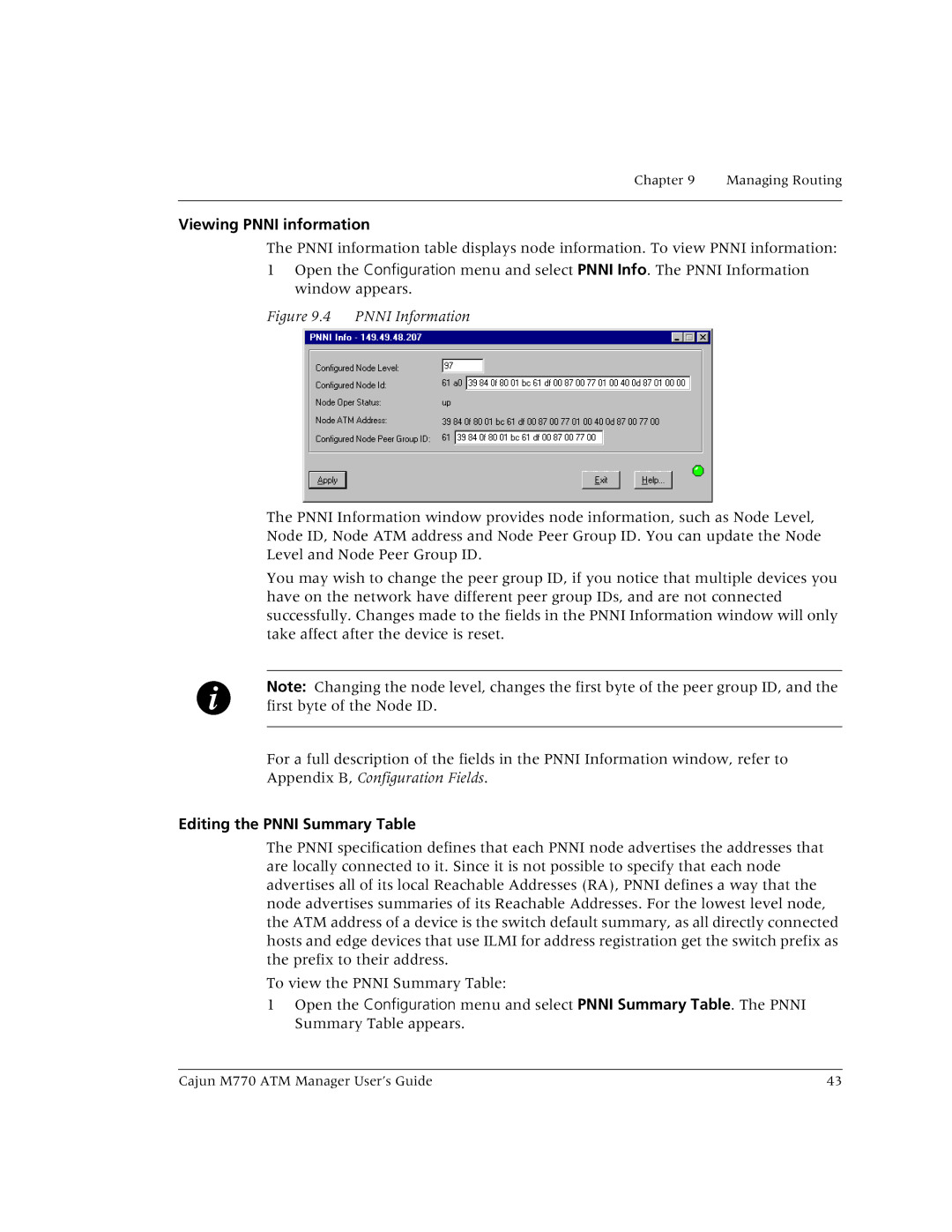
Chapter 9 Managing Routing
Viewing PNNI information
The PNNI information table displays node information. To view PNNI information:
1Open the Configuration menu and select PNNI Info. The PNNI Information window appears.
Figure 9.4 PNNI Information
The PNNI Information window provides node information, such as Node Level, Node ID, Node ATM address and Node Peer Group ID. You can update the Node Level and Node Peer Group ID.
You may wish to change the peer group ID, if you notice that multiple devices you have on the network have different peer group IDs, and are not connected successfully. Changes made to the fields in the PNNI Information window will only take affect after the device is reset.
Note: Changing the node level, changes the first byte of the peer group ID, and the first byte of the Node ID.
For a full description of the fields in the PNNI Information window, refer to Appendix B, Configuration Fields.
Editing the PNNI Summary Table
The PNNI specification defines that each PNNI node advertises the addresses that are locally connected to it. Since it is not possible to specify that each node advertises all of its local Reachable Addresses (RA), PNNI defines a way that the node advertises summaries of its Reachable Addresses. For the lowest level node, the ATM address of a device is the switch default summary, as all directly connected hosts and edge devices that use ILMI for address registration get the switch prefix as the prefix to their address.
To view the PNNI Summary Table:
1Open the Configuration menu and select PNNI Summary Table. The PNNI Summary Table appears.
Cajun M770 ATM Manager User’s Guide | 43 |
